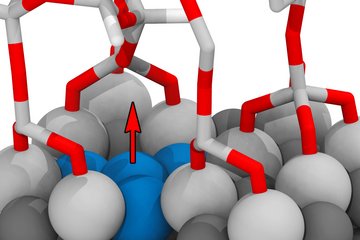All genres
1941.
Talk
Textures of biological matter. Deutsche Gesellschaft für Materialkunde e.V., Fachausschuss Texturen, RWTH Aachen, Germany (2007)
1942.
Talk
Crystal Mechanics of Metals and Biological Matter. Colloquium lecture at Max Planck Institute for Colloids and Interfaces, Golm/Potsdam (2007)
1943.
Talk
Simulation methods in materials science. Lecture at Akademie der Wissenschaften und der Literatur, Rheinland Pfalz (2007)
1944.
Talk
Microstructure and micromechanics of hard biological tissues: From lobster cuticle to human bone. Seminar talk at Université Catholique de Louvain, Dept. of Applied Sciences, Louvain, Belgium (2007)
1945.
Talk
3D analysis of nanoindentation in metallic single crystals. Sixth GAMM Seminar on Microstructures, Berlin, Germany (2007)
1946.
Talk
Influence of structural principles on the mechanics and efficiency of different biological materials using lobster cuticle as a model material. Second International Conference on Mechanics of Biomaterials & Tissues (ICMBT 2007), Lihue, HI, USA (2007)
1947.
Talk
Introducing the Effect of Grain Boundaries into Crystal Plasticity FEM Using a Non Local Dislocation Density Based Constitutive Model. Theory and Application to FCC Bi-Crystals. Euromech Colloquium 463, MPI für Eisenforschung GmbH, Düsseldorf, Germany (2007)
1948.
Talk
Computational modeling of TiAl microstructures which developed microcracked grain boundaries. Bundesanstalt für Materialforschung und -prüfung (BAM), Berlin, Germany (2006)
1949.
Talk
Computational modeling of TiAl microstructures which developed microcracked grain boundaries. GKSS Research Center, Geesthacht, Germany (2006)
1950.
Talk
3D Study on Texture and Size Effects Below Nanoindents in Cu Single Crystals Using 3D FIB-EBSD and Crystal Plasticity Finite Element Simulations. MRS Fall Conference, Boston, MA, USA (2006)
1951.
Talk
3D EBSD Characterization of a Nanocrystalline NiCo Alloy by use of a High-resolution Field Emission SEM-EBSD Coupled with Serial Sectioning in a Focused Ion Beam Microscope (FIB). MRS Fall Conference, Boston, MA, USA (2006)
1952.
Talk
The X-files of Materials Science - Unsolved Riddles from the Dawn of Research. MRS Fall Conference, Boston, MA, USA (2006)
1953.
Talk
Texture of Alpha-chitin and Calcite as a Microscopic Composite Design and Macroscopic Biological Construction Principle of the Exoskeleton of the Lobster Homarus americanus. MRS Fall Conference, Boston, MA, USA (2006)
1954.
Talk
Mechanical Properties of the Lobster Cuticle Investigated by Bending Tests and Digital Image Correlation. MRS Fall Conference, Boston, MA, USA (2006)
1955.
Talk
Mechanical Properties of an in-vivo Modified Biological Nano-composite Material. MRS Fall Conference, Boston, MA, USA (2006)
1956.
Talk
The influence of sterilization processes on the micromechanical properties of carbon fiber reinforced PEEK composites for bone-implant applications. 2006 MRS Fall Conference, Boston, MA, USA (2006)
1957.
Talk
On the Mechanism of Mechanical Mixing and Deformation-induced Amorphization in Heavily Drawn Cu-Nb-Ag in situ Composite Wires. MRS Fall Conference, Boston, MA, USA (2006)
1958.
Talk
Bottom up design of novel Titanium-based biomaterials through the combination of ab-initio simulations and experimental methods. Materials Research Society fall meeting, Boston, MA, USA (2006)
1959.
Talk
Strain Effects on the Magnetic Properties of Cu-Nb Nanofilamentary Composites. MRS Fall Conference, Boston, MA, USA (2006)
1960.
Talk
Computational modeling of TiAl microstructures which developed microcracked grain boundaries. Institut für Metallkunde und Metallphysik RWTH-Aachen, Aachen, Germany (2006)











